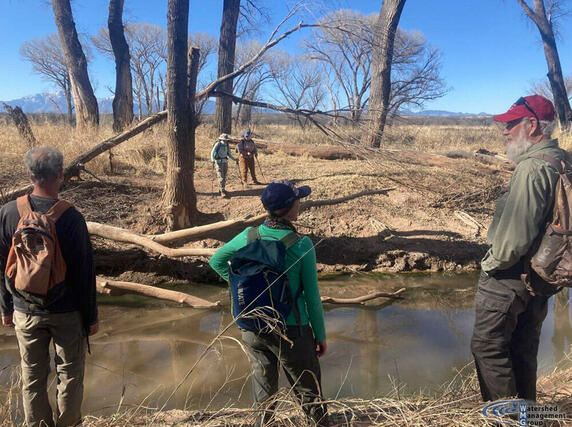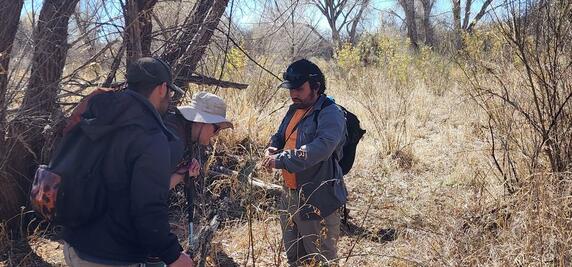
Beavers and Watershed Management Group: The Mission to Preserve Local Beaver Populations
Beavers are (coming) back, babyyy!
Introduction
In a recent news story from the Herald Times, our dedicated volunteers at Watershed Management Group were highlighted for their exciting mission: to track down evidence of beavers along the San Pedro River. Armed with keen eyes and a passion for conservation, they scoured the tree line for telltale signs of these industrious rodents.
The Importance of Beavers
But why all the fuss about beavers? These furry engineers play a crucial role in maintaining the health of our watersheds. By building dams, they slow streams, fill floodplains, and create lush marshes called cienegas. This beaver-powered transformation raises water tables and boosts biodiversity, ensuring a thriving ecosystem.
Historical Challenges and Restoration Efforts
Sadly, beavers in Southern Arizona have faced historical challenges. Centuries ago, fur trappers decimated the population for profit, leading to dire ecological consequences. Today, we at Watershed Management Group are working tirelessly to restore beaver populations and protect our wetlands.
Relocating Beavers and Binational Collaboration
Beavers relocated from problematic areas, such as Yuma's agricultural canals and urban storm drains, have found a new lease on life in the San Pedro watershed. Here, they can work their magic without interfering with infrastructure. This binational effort involves our collaboration with Mexican organizations like Conamp, Profauna, and Naturalia.
canals and urban storm drains, have found a new lease on life in the San Pedro watershed. Here, they can work their magic without interfering with infrastructure. This binational effort involves our collaboration with Mexican organizations like Conamp, Profauna, and Naturalia.
Dam Good News! Beavers Are Returning to Ciénega Creek
In the arid landscapes of the Sonoran Desert, we at WMG have embarked on an ambitious journey to reintroduce beavers to their ancestral rivers. Since 2019, we have steadfastly led the charge for the reintroduction of beavers into Ciénega Creek, a vision that's now on the brink of realization. Through our advocacy and rigorous groundwork, we've reached a pivotal milestone: all agency Environmental Assessments are complete, and the Bureau of Land Management and AZ Game and Fish are planning to reintroduce beavers by the end of 2025.
Cienega Creek Confluence, above (Photo credit: Julius Schlosburg)
3rd Binational Beaver Survey
Spring 2024 brought with it our third annual binational beaver survey. With the help of 70 volunteers, over 40 miles of the San Pedro in Arizona were carefully surveyed, and 30 more miles of creek habitat survey is planned for Mexico. Preliminary results show the beaver population in the San Pedro National Riparian Conservation Area in Arizona is similar or smaller than last year. Stay tuned to see the full results, including our Mexico survey, this summer.
Conclusion
From invasive species removal to beaver habitat restoration, our team at WMG has been out in the Santa Cruz and San Pedro River watersheds stewarding our rivers. The work in Tucson has largely been accomplished with help from our River Run Network volunteers; the work in Mexico has been primarily in partnership with ranchers; and we've worked both on public and private lands. Our goal is to help restore our heritage of flowing desert rivers, through practices that infiltrate and recharge more water, expand floodplains and wetlands, and restore native riparian habitat.
Through tireless work and dedication, our volunteers at Watershed Management Group are ensuring a brighter future for beavers and the ecosystems they support. With each survey and relocation effort, we bring ourselves one step closer to a healthier, more vibrant watershed.
Stay up to date with our Release the Beavers campaign and help with future restoration efforts
by joining the River Run Network at WatershedMG.org/RRN.
Read the full Herald Times article here Beavers and Watershed Management: Volunteers Work Tirelessly to Catalog and Preserve Local Beaver Populations.
